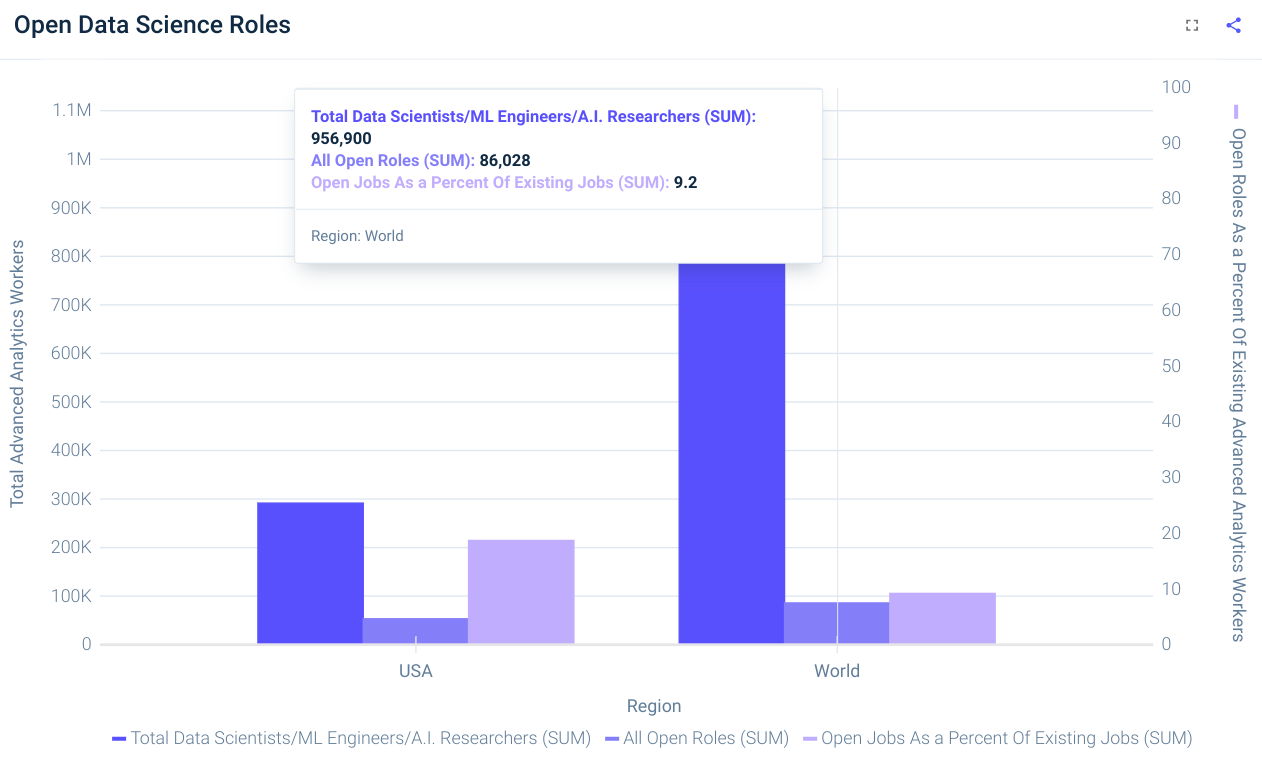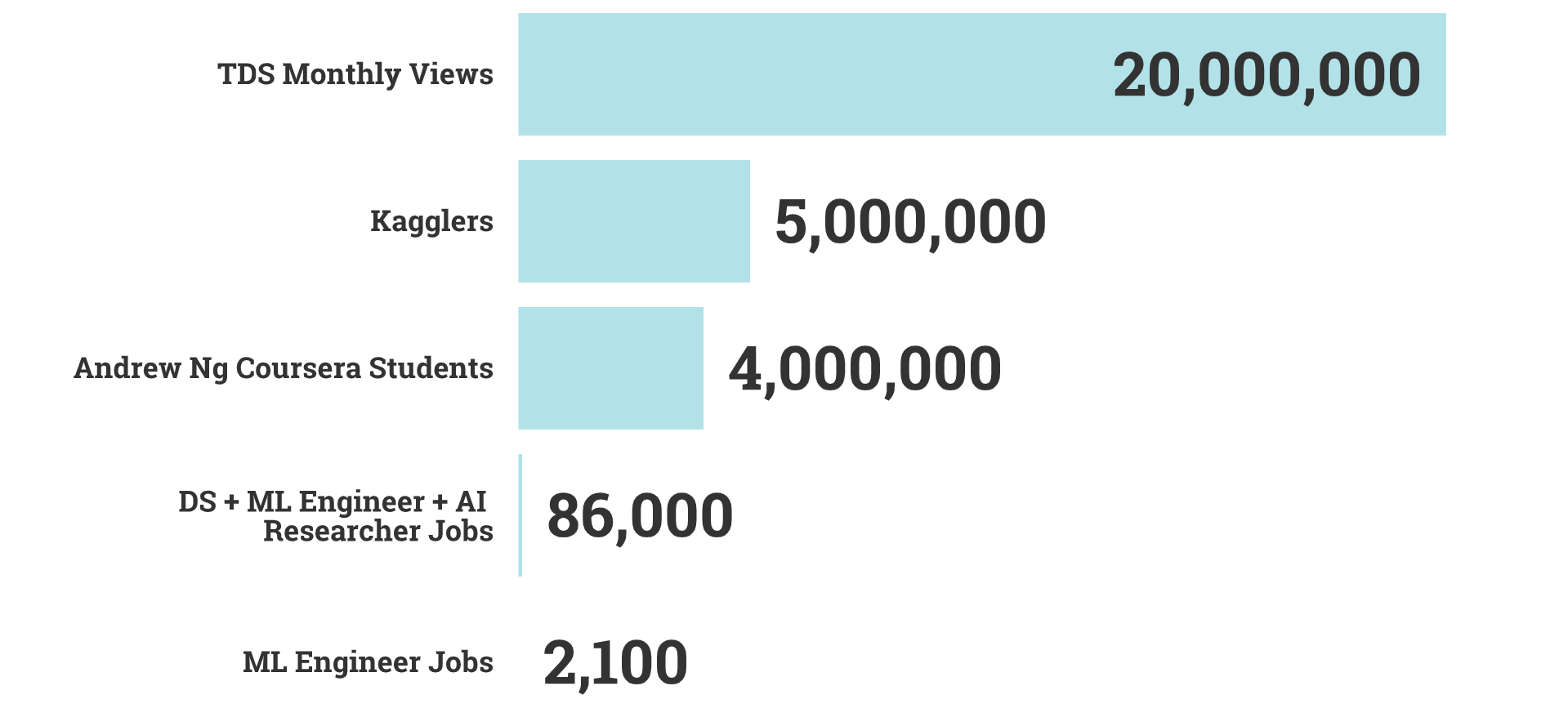Getting a data science job is as easy as learning skills like Python and Jupyter, competing in Kaggle competitions, getting certified, and submitting your CV on job portals, right?
Wrong.
Recently, Kaggle hit 5 million unique users. Looking at other communities, Towards Data Science gets 20 million monthly views. AI researcher Andrew Ng has 4 million learners across his Coursera courses.
In the meantime, there are just 17,100 ML Engineers worldwide. As of writing this article, there are 2,100 open Machine Learning Engineer roles on LinkedIn, worldwide. Of those, around 80 are at the FAANGs.

“Open Data Science Roles” by Apteo’s “data science career trends” dashboard.
To be fair, if we include general data science and AI researcher roles, there are 86,000 total open positions worldwide. Nonetheless, calling data science “competitive” would be the understatement of the year.

Data science communities vs. data science job opportunities. Visualized by author.
Red Ocean vs. Blue Ocean Strategy
In business, a competitive field is referred to as a “red ocean,” where sharks are battling it out in a crowded space. In contrast, a “blue ocean” refers to unexplored, competitor-free market spaces.

Icons by Edited by author.
As a prospective data scientist, your goal is to compete in the blue ocean. Here are four ways to do so.
#careers #data-science #career-advice #machine-learning #editors-pick #data analysis